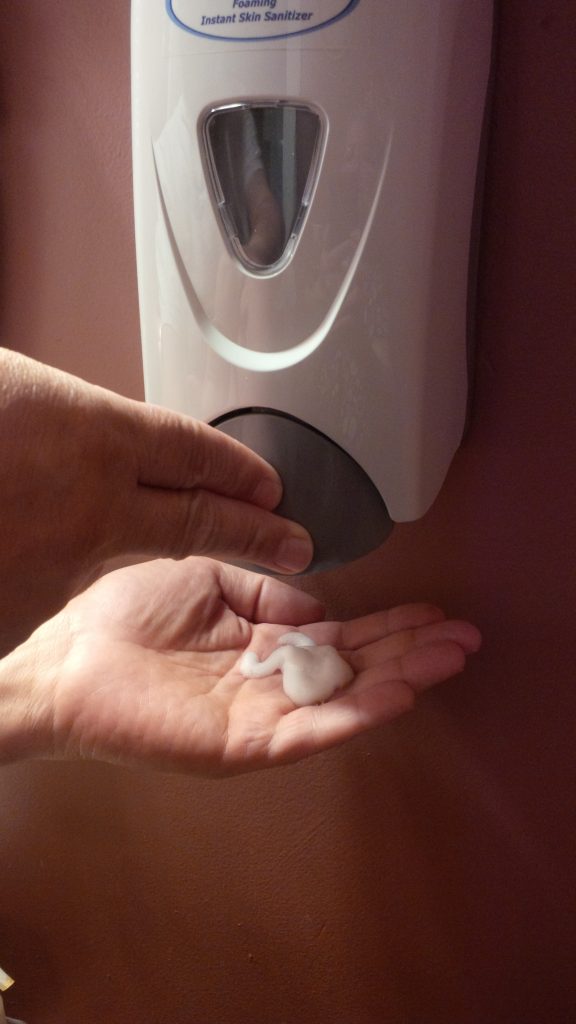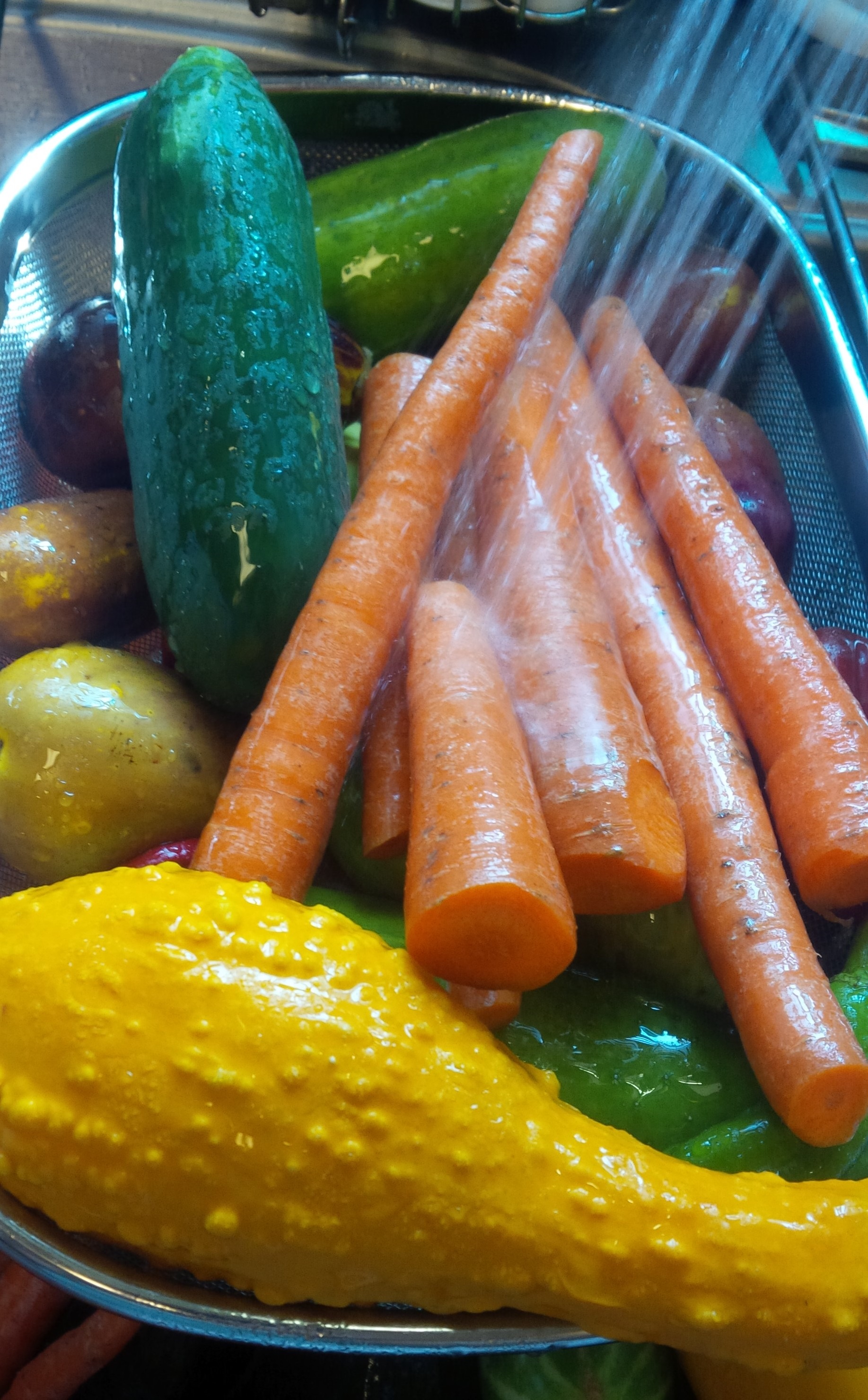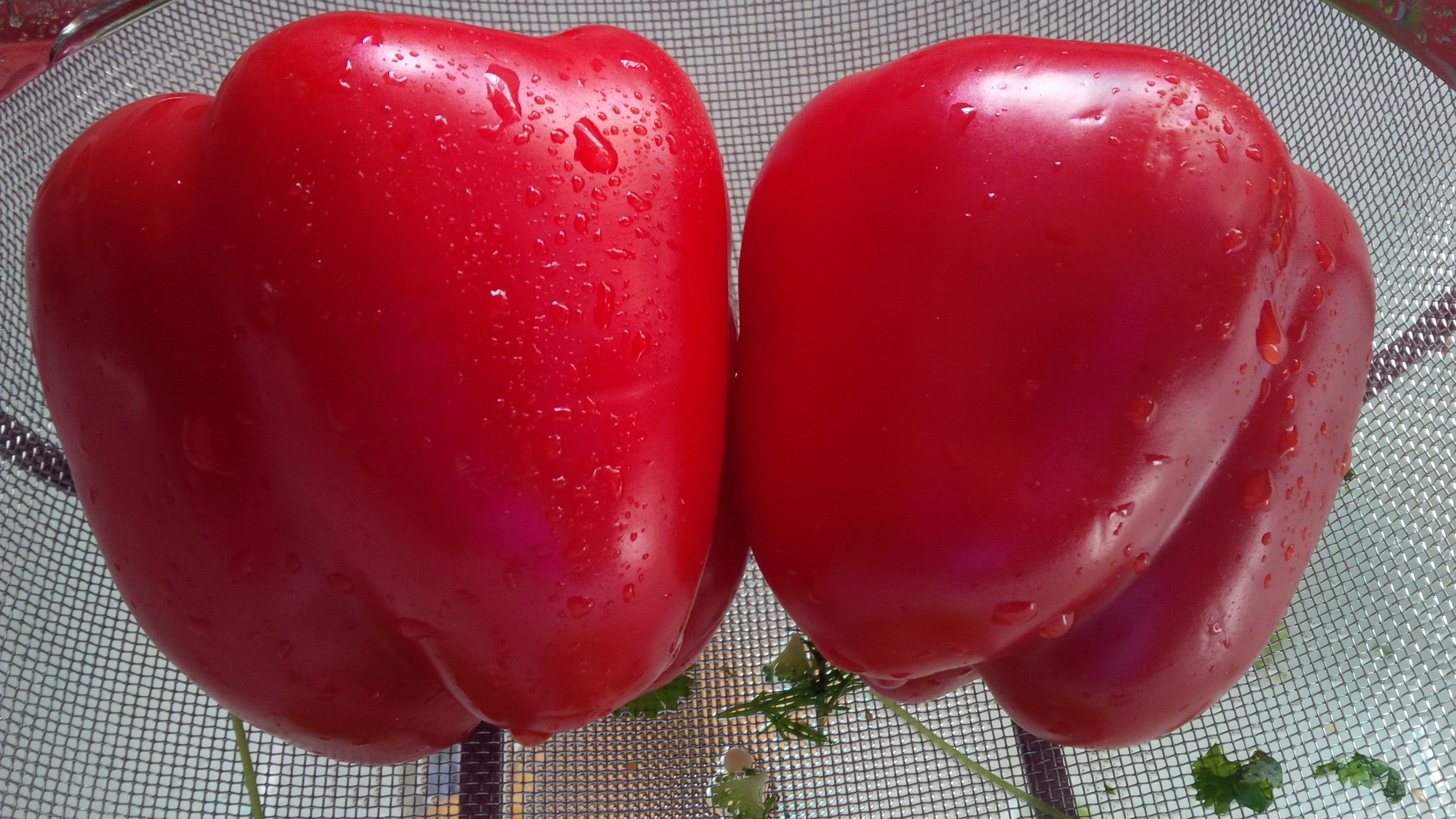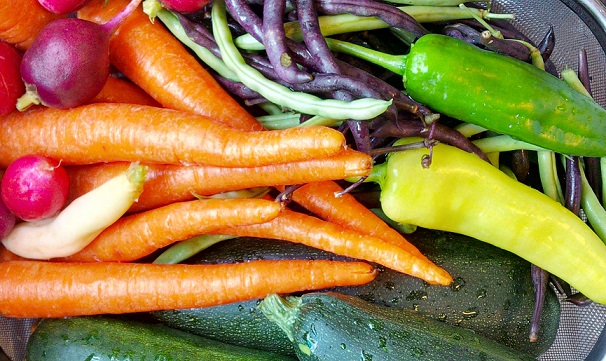
Clean hands for health!
Let’s start out by discussing aseptic technique. What is that? Well, it means, without germs. Aseptic technique eliminates as many pathogens (illness-causing organisms) as possible. Why is that important? When you are serving fresh food (food you aren’t going to cook), it’s very important to reduce the amount of germs.
– Keeping pathogens out of the food helps it last longer.
– Bacteria and fungi are designed to break down food so that it can be recycled back into the soil. The less bacteria, the more nutrition is retained.
– Food is SAFER when you reduce the amount of organisms.
How? By:
– Cleaning work surfaces
– Using clean utensils, bowls and storage containers
– THOROUGHLY washing hands and/or using disposable gloves when handling foods
– Avoiding contamination while working – don’t touch dirty surfaces with clean or gloved hands! If you do, wash hands again and change gloves.
– Clean the food and remove pathogens by soaking, washing and rinsing (vinegar soak technique shown below)

We prepare anywhere between 75 – 150 lbs of fresh produce at a time. We set up the work area and disinfect the surfaces with a mild bleach solution (1:100 bleach/water). This is a weak solution but will disinfect most surfaces. Do not spray or mist near birds – use a bucket or dishpan and rag.
Once surfaces are prepped, allow them to dry over a couple of minutes. You should use enough solution for the area to remain wet for at least three to five minutes. Do not rinse, just allow to air dry.
We never place food directly on counters or tables. We always use cutting boards that have been sanitized in the dishwasher.
First we rinse and scrub any visible dirt from the produce. Then we will a fill clean, sanitized container with vinegar and water 1:3 mixture – one part vinegar to 3 parts water. We then soak the produce in this for 5 minutes contact time. In scientific tests done by researchers at Cooks Illustrated, it was proven that using a soak or spray of this solution, you can eliminate 98% of pathogens on your produce. This is even more effective that scrubbing with a brush. (https://www.npr.org/templates/story/story.php?storyId=14540742) You can use a sprayer bottle, and we do with some of the more delicate produce.
After soaking or spraying, rinse very thoroughly. Be careful to handle the produce only with very clean or gloved hands once it is wash to avoid re-introducing pathogens. We use disposable nitrile gloves.

Once rinsed, the produce is ready to be processed either by hand or mechanically. Alternately, you can offer some produce whole as a foraging opportunity.
Once processed, the food should be minimally handled and stored in containers that have been sanitized in a dishwasher. Food processed using aseptic technique will be safer and last longer than conventionally prepared produce. Don’t believe me? Try doing the “sniff test.” Do a small batch of diced food by hand without the washing and soaking, then do the rest using aseptic technique. Fill two small bowls with each and leave on the counter for 4-5 hours at room temperature. When you return, the bowl that was not washed and soaked will have a distinctly “sour” smell. If cleaned thoroughly, the other bowl will usually have little to no smell.
It’s a lot of work, but worth it both in the happiness and health of your feathered companions.
